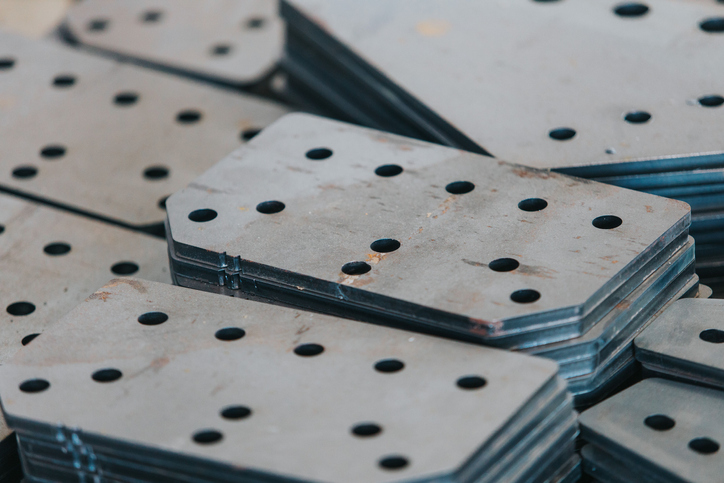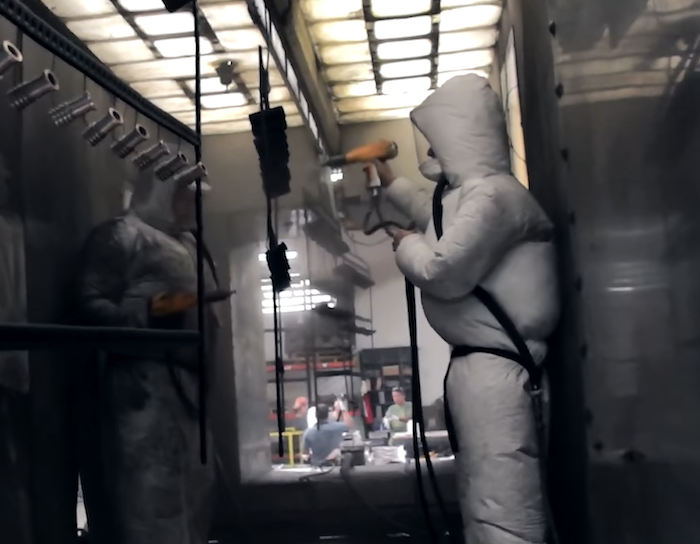Robotic welding offers numerous advantages for the precision metal manufacturing industry. In this article, we explore what robotic welding is, the benefits, applications, and compare its features vs manual welding.
What is Robotic Welding?
Generally, welding is a technique that serves to join metals or thermoplastics by causing coalescence, typically through heat. Traditional welding methods are a manual process, but could include the use of semi-automatic equipment. In contrast, robotic welding entails using automated programmable tools to perform welding processes. It includes components such as robotic arms, welding torches, and control systems that ensure precision and consistency. These control systems typically have cameras and sensors that provide real-time feedback on the welding process. Thus, helping to monitor weld quality, temperature, and the presence of any defects.
Robotic Welding Basics
Although a robotic welding process would vary depending on the project specifications, a typical process will follow these steps.
Programming
The robotic welding system requires programming with specific welding paths, parameters, as well as other instructions. Specifics of the program would vary according to the task at hand, so its operation requires trained personnel. However, these personnel may not be on site as most systems can accommodate either manual or remote programming.

Setup
The next step is typically the positioning of the workpiece securely using a vice or any appropriate fixture. Also, the welding torch is set up and calibrated to ensure proper operation.
Welding Process
Once active, the system will follow the path according to its program code to perform the welding. Generally, these systems are able to perform welds quicker and with more precise movements, which ensures consistent welds. This is great when working on large amounts of workpieces.
Monitoring and Adjustment
During the welding process, sensors and vision systems monitor the weld quality. The data collected can be used to make real-time adjustments to the welding parameters, ensuring high-quality results. Moreover, these adjustments could be automatic or by human intervention.
Post-processing
After welding is complete, the workpieces may undergo additional processes such as cleaning, inspection, or finishing.
Advantages of Robotic Welding
Robotic welding technology has revolutionized the manufacturing workspace by offering a range of benefits. The following sections explore these benefits.
Increased Accuracy
Robotic welding ensures precise and consistent welds, thereby improving product quality. This is because the programming of the robotic arm minimizes the possibility of errors. Also, the use of sophisticated monitoring systems provides better control of process parameters like temperature, and quick detection of defects. As a result, they produce high-quality welds that meet and even exceed industry standards.
Higher Production Rates
Robotic welding speeds up the production process, enabling higher output without compromising quality. The robotic arm can perform repetitive welding tasks faster and more efficiently than human operators. Thus, allowing manufacturers to increase production rates without sacrificing quality.
Improved Safety
Safety is a critical concern in welding operations due to the inherent hazards such as high temperatures, intense light, and toxic fumes. Robotic welding addresses these concerns by minimizing human involvement in dangerous environments, which is one of its major benefits. In addition, monitoring systems can quickly identify abnormalities in parameters and address this immediately.
Consistent Quality
Consistency is a hallmark of robotic welding, ensuring that each weld adheres to the same high standards. Robots provide uniformity in weld appearance and strength, which is essential for producing reliable and durable products. This consistency translates into higher customer satisfaction and fewer quality control issues.
Applications of Robotic Welding
Robotic welding finds wide applications across various industries due to its precision, efficiency, and reliability. Here are some key applications.
Automotive Industry
Robotic welding serves extensively for welding car frames, exhaust systems, and other components, thus, ensuring consistent and high-quality welds that meet safety standards.

Aerospace Industry
It is critical for manufacturing aircraft components that require precise and reliable welds to ensure structural integrity and also safety.
Manufacturing and Fabrication
Robotic welding serves in the production of machinery, equipment, and structural components, where consistency and high production rates are essential.
Electronics
It is effective in welding small, intricate components in electronic devices, where precision is paramount.
Construction
Robotic welding is applied in the fabrication of steel structures, bridges, and buildings, where durability and strength are crucial.
Energy
Utilized in the production and maintenance of pipelines, oil rigs, and power generation equipment, while ensuring robust and reliable welds.
Light Assembly
As seen with ITD Precision, robotic welding is ideal for light assembly tasks, ensuring high precision and efficiency in the production process.
Robotic Welding Manual Welding
When it comes to welding, manufacturers have two options: robotic welding and manual welding. Both methods have their own advantages and disadvantages, which can affect the quality, efficiency, and cost of the final product.
| Feature | Robotic Welding | Manual Welding |
| Precision | High precision and consistent welds due to programmed accuracy and repeatability. | Human error may cause less consistent welds with potential for variation. |
| Production Speed | High production speed with the ability to work continuously and at a faster rate. | Slower production rates due to human labor. |
| Safety | Reduces risk of workplace injuries and exposure to hazardous conditions like intense heat and fumes. | Higher risk of workplace injuries and exposure to hazardous conditions, hence requires strict safety measures. |
| Quality Consistency | Consistent weld quality with minimal variation. | Variation in weld quality due to operator skill. |
| Cost Efficiency | Higher initial investment but lower long-term costs because of reduced labor and higher throughput. | Lower initial investment but higher long-term costs. |
| Flexibility | Less flexible; changes in welding tasks or part designs require reprogramming. | More flexible; welders can easily adapt to changes and perform custom welds. |
Robotic Welding with ITD Precision
In the competitive world of manufacturing, precision and efficiency are crucial. ITD Precision is at the forefront of this transformation, offering state-of-the-art robotic welding solutions that set new standards for quality and productivity. Our compliance with AIAG CQI-15 means that our welding processes meet rigorous quality requirements for automotive suppliers, focusing on improving the consistency and reliability of welding operations. Contact us today for more information.


